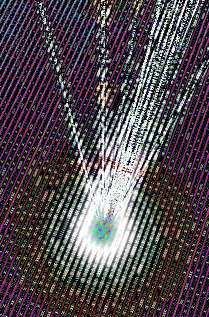Four keys for quantum bits
 UNSW engineers have achieved a quantum computing breakthrough.
UNSW engineers have achieved a quantum computing breakthrough.
A research team has demonstrated the ability to encode quantum information in four distinct ways within a single atom on a silicon chip.
This development marks a crucial step towards more efficient and flexible quantum chip design.
Using the sixteen quantum states of an antimony atom implanted in silicon, the researchers have showcased a method that could potentially streamline the operation of millions of quantum computing units on a compact silicon quantum computer chip.
Antimony was selected for its eight nuclear quantum states, combined with an electron's two quantum states, yielding sixteen possible states for quantum information encoding.
Achieving a similar capacity with traditional qubits would necessitate the creation and integration of four separate units.
Lead author Irene Fernandez de Fuentes, under the mentorship of Scientia Professor Andrea Morello, leveraged over a decade of research to demonstrate the feasibility of implementing various quantum control methods within the same atomic framework.
The implantation process was carried out by collaborators at the University of Melbourne, using the facilities at the Australian National University's Heavy Ion Accelerators.
The team's methods include controlling the antimony atom's electron with an oscillating magnetic field, manipulating the atom's nuclear spin with a magnetic field, employing an electric field for nuclear control, and using electric fields to manage both the nucleus and the electron through flip-flop qubits.
This versatility in control mechanisms offers engineers and physicists greater flexibility in future quantum computing chip designs, addressing the challenges of space efficiency and precision in quantum computing.
The new approach could open the potential for silicon-based quantum computing to accommodate millions of qubits in a minimal space, in contrast to the larger requirements of existing models.
This density advantage, combined with the ability to precisely control quantum states through various methods, positions silicon as a promising medium for the future of quantum computing.
The team now aims to use the antimony atom's expansive computational capacity to perform more sophisticated quantum operations and develop a ‘logical’ qubit within a single atom.
The full study is accessible here.








 Print
Print